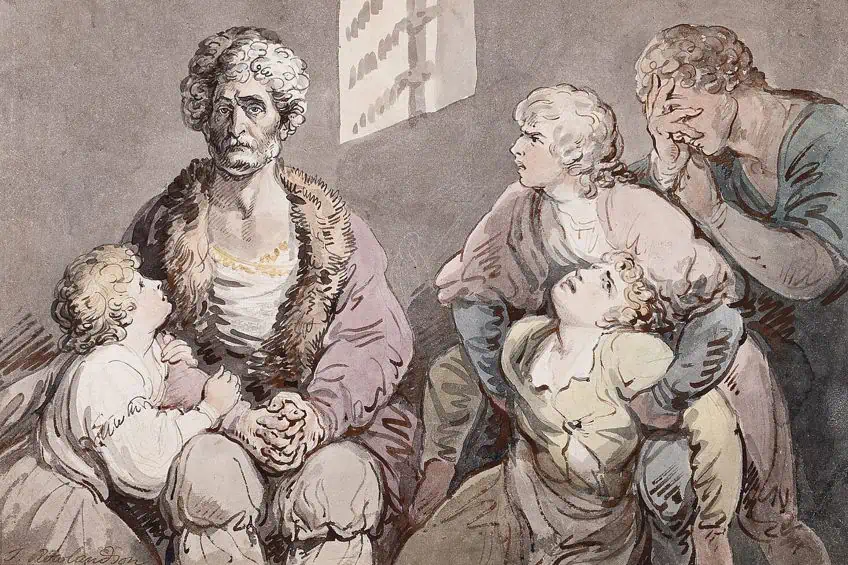What Is Aquatint? – Creating Tonal Depth Through Etching
What is aquatint etching? The aquatint process is an intaglio printmaking technique, yet unlike traditional etching, it is used for creating tonal effects instead of lines. Aquatint printmaking utilizes acids to create indentations on the surface of a plate so that it may hold ink for printing. Today, we will learn all about aquatint in art, and answer questions such as, “what is a characteristic of the aquatint process?”.
What Is Aquatint Printmaking?
The aquatint process is classified as a variant of etching where the focus is on creating various tones for a specific print. It is usually used in combination with traditional etching techniques to create works that contain both line and shading. It has also traditionally been used to print in color, either by printing with numerous plates in various colors or by producing monochrome prints that were subsequently hand-colored with various watercolors. Aquatint plates wear fast and are more difficult to rework than other types of intaglio plates.
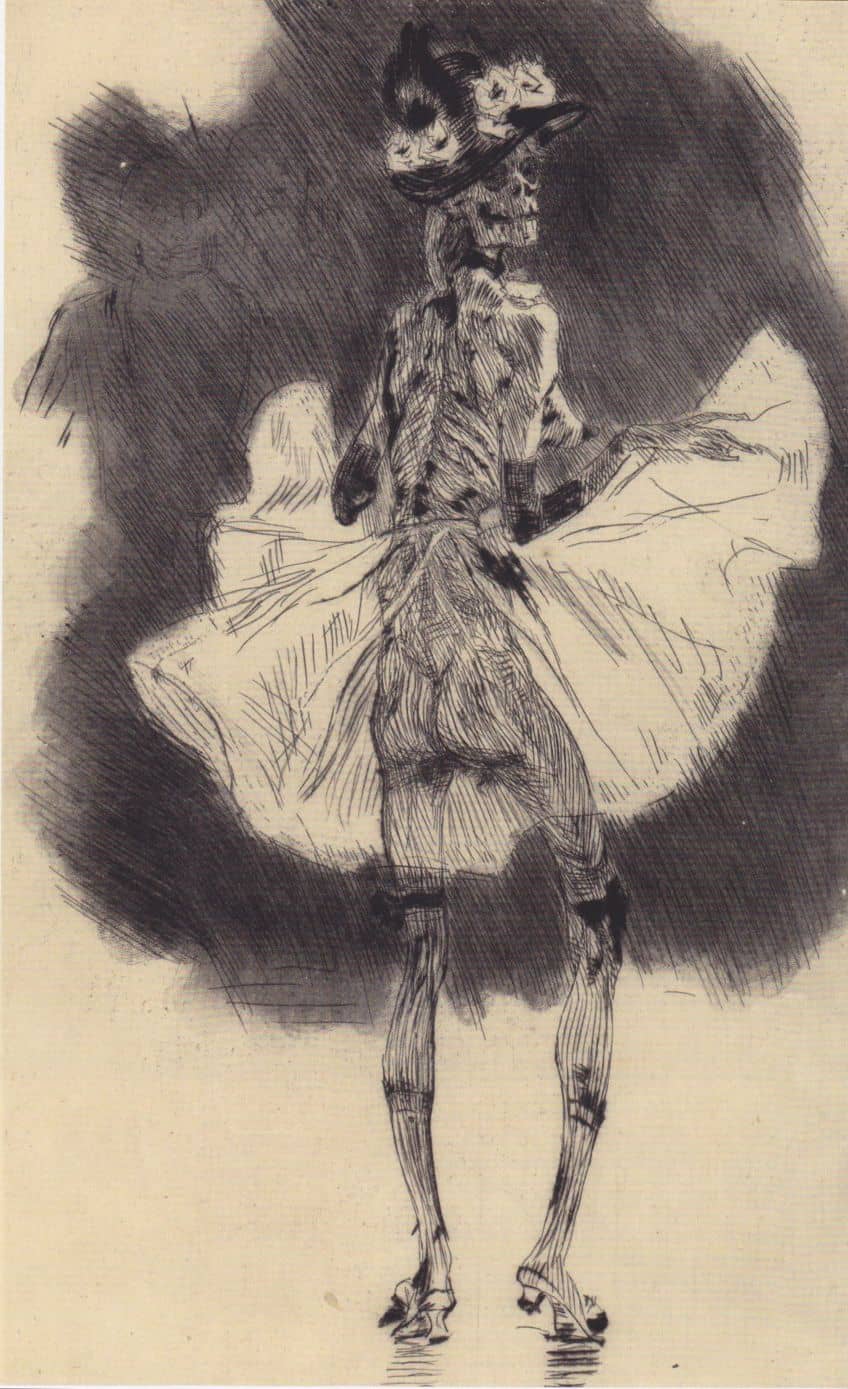
Understanding the Aquatint Process
In intaglio printing processes such as etching and engraving, the artists cut markings on the plate’s surface in order to hold ink. A zinc or copper plate is usually utilized in the aquatint printmaking process. The surface of the metal plate is inked and then wiped clean, leaving just the markings with ink. The plate is sent through a printing press with a sheet of paper, and immense pressure is exerted to push the paper against the markings, causing the ink to be transferred to the paper.
This process is carried out several times. Aquatint etching involves the application of an acid to etch into the plate.
The aquatint process makes use of powdered rosin to produce a tonal effect, whereas etching requires a needle to scrape across an acid-proof resist to form lines. The rosin is acid-resistant and is generally bonded to the plate by regulated heat; where the grains exist, the print will be white with black sections around it. The amount of mordant exposure across large areas controls the tonal variations, and so the image starts to take form one large section at a time. Before the printing process begins, the rosin is rinsed from the plate.
The History of Aquatint in Art
Around 1650 there were a few different artists experimenting with various techniques, such as the Dutch printmaker and painter Jan van de Velde IV, who used resin dust for the first time to incorporate tonal effects into his etchings. However, none of them established a method that was embraced by other printmakers of the day. Experimentation with various approaches by multiple artists reached a peak around 1750, and because they were initially extremely secretive, the precise moment of the creation of the standard aquatint process remains unknown.

Early Experiments With Aquatint in Art
Among others who made claims to inventing the technique were the Swede Per Floding, J. B. Delafosse, and Jean-Baptiste Le Prince in 1768. Le Prince was more successful than the others in publicizing his method, although he was unable to sell it during his lifetime. In 1782, the Académie royale de peinture et de sculpture purchased his book posthumously and made it available to the public. Though England would become one of the most prolific users of the aquatint process, the first English examples were not displayed until 1772.
It was picked up by the artist Paul Sandby, a watercolorist who also appears to have made technical alterations as well as coined the term “aquatint”.
English Pioneers
In England, painters like Thomas Gainsborough and the aforementioned Sandby were drawn to the etched outlines created by the aquatint process, especially for duplicating renowned English landscape watercolors, which at the time were usually preceded by an ink outline drawing. The aquatint printmaking process was also used by publishers of images and prints for more expensive books, both of which were big British markets at the time. A print with aquatint and etching produced rather excellent results in all of these areas when watercolor was used by relatively inexperienced artists who were copying a model, with an even wash of color on top of the different tones of the aquatint. One of London’s most prominent publishers, Rudolf Ackermann, employed a large number of French immigrants to work in the space above his store in The Strand, each of them adding one color and then handing the sheet down the long table of workers.
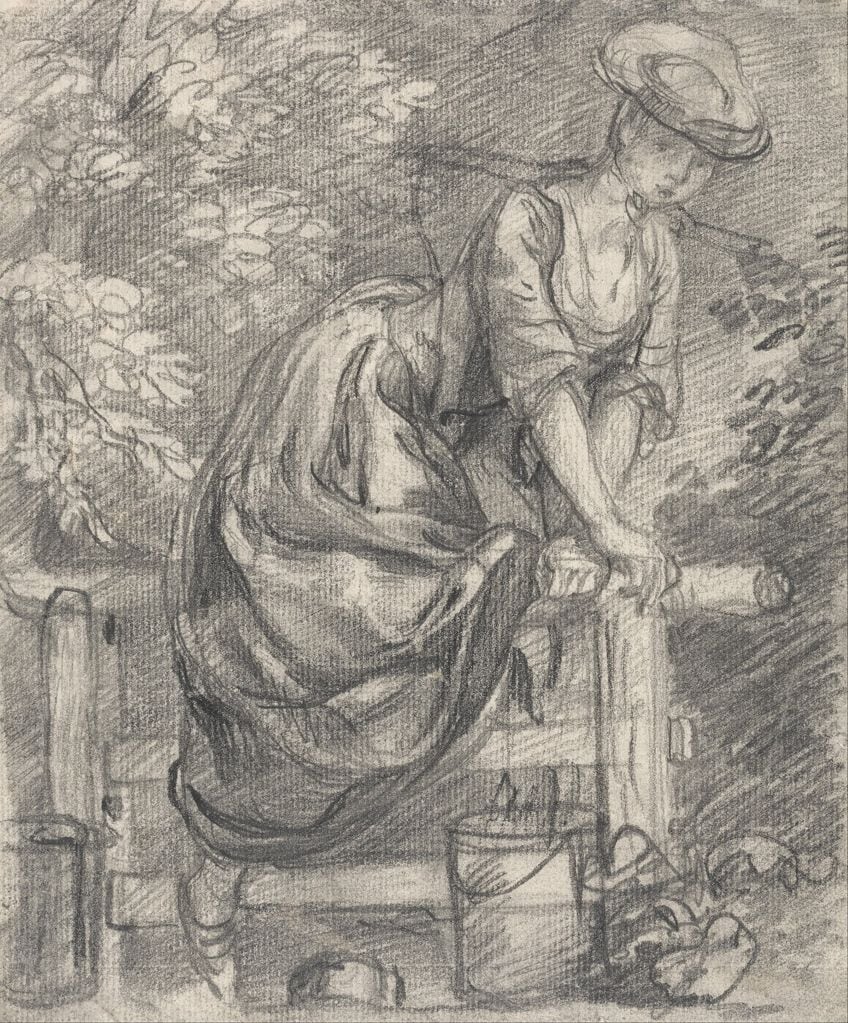
French Developments
During the same time period, there was a persistent desire to find ways to create true color printing using several plates, which made use of a variety of printmaking processes, including aquatint etching for tone. French aquatint artists included Philibert-Louis Debucourt and Jean-François Janinet. Another offshoot of this French movement specialized in illustrating medical texts, mainly employing mezzotint for tone.
This was first headed by Jacob Christoph Le Blon, who essentially predicted contemporary CMYK color separation.
The Revival of Aquatint Printmaking
After several decades in the middle of the 19th century when the aquatint process was scarcely employed and effectively outdated for commercial purposes, it was reintroduced at the end of the century in France by Félicien Rops, Édouard Manet, Pissarro, Degas, Jacques Villon, and other renowned painters. Mary Cassatt presented a series of unique aquatint and drypoint prints in Paris in 1891, inspired by the previous year’s exhibit of Japanese woodblock prints.
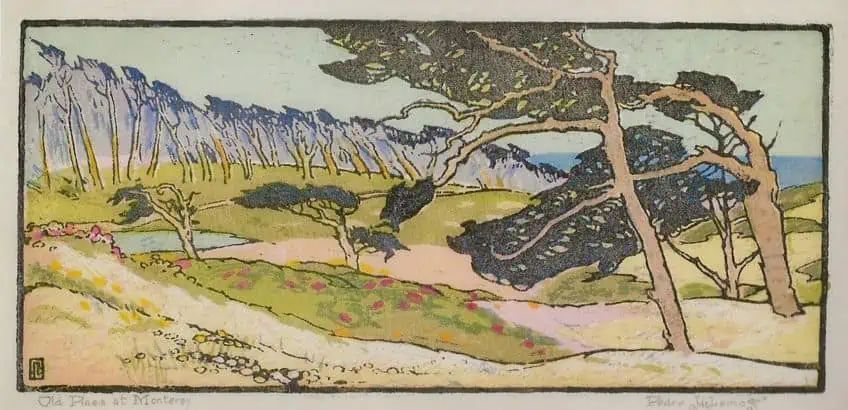
The varied hues were achieved by making use of multiple blocks. Mary Cassatt was drawn to Japanese design because of its clarity and simplicity, as well as its proficient use of color blocks. The approach was still utilized throughout the 20th century, with notable users including the German Johnny Friedlaender and the Czech T. F. Simon. Printmaker Pedro Joseph de Lemos introduced aquatints in art schools across America with his books that simplified the complex techniques and traveling exhibits of his award-winning pieces.
The Modern Aquatint Process
A metal plate, acid, and a substance to resist the acid are required for the aquatint process. The acid resist in every kind of etching is called “the ground”. The ground can be applied to the plate by dissolving resin powder in spirits, setting the powder on the plate’s surface, or applying a liquid acrylic resist. To apply the powdered resin, an aquatint box is utilized. The granules of powder are placed at the bottom of the box, and bellows or a crank is used to blow it up into the box’s air.
The engraver can inspect the flowing powder’s density through a window and insert the plate in the box via a drawer.
When the powder has completely covered the plate, it may be collected from the box and used in the subsequent processes. When the plate is heated, the resin melts, creating a fine and even covering; if it is in spirits, it evaporates, and the outcome is practically the same. The plate is then immersed in acid, resulting in an even and fine amount of corrosion that is suitable to hold the required ink for the print. The plate is considered to have a 50% halftone at this point in time. This suggests that if the plate was printed without further corrosion, the color tone would be gray.
At some stage, the printmaker will etch an outline of any features of the design that they want to define using line; this serves as the foundation and guidance for the subsequent tone work. If they are interested in keeping any areas completely white and devoid of ink, they can apply an acid-resistant “stop out” at the very beginning, before any corrosion happens. The artist next immerses the plate in the acid bath, gradually blocking out the parts that have reached the desired tone. Aquatints have a unique, watery appearance due to these tones and limited line elements.
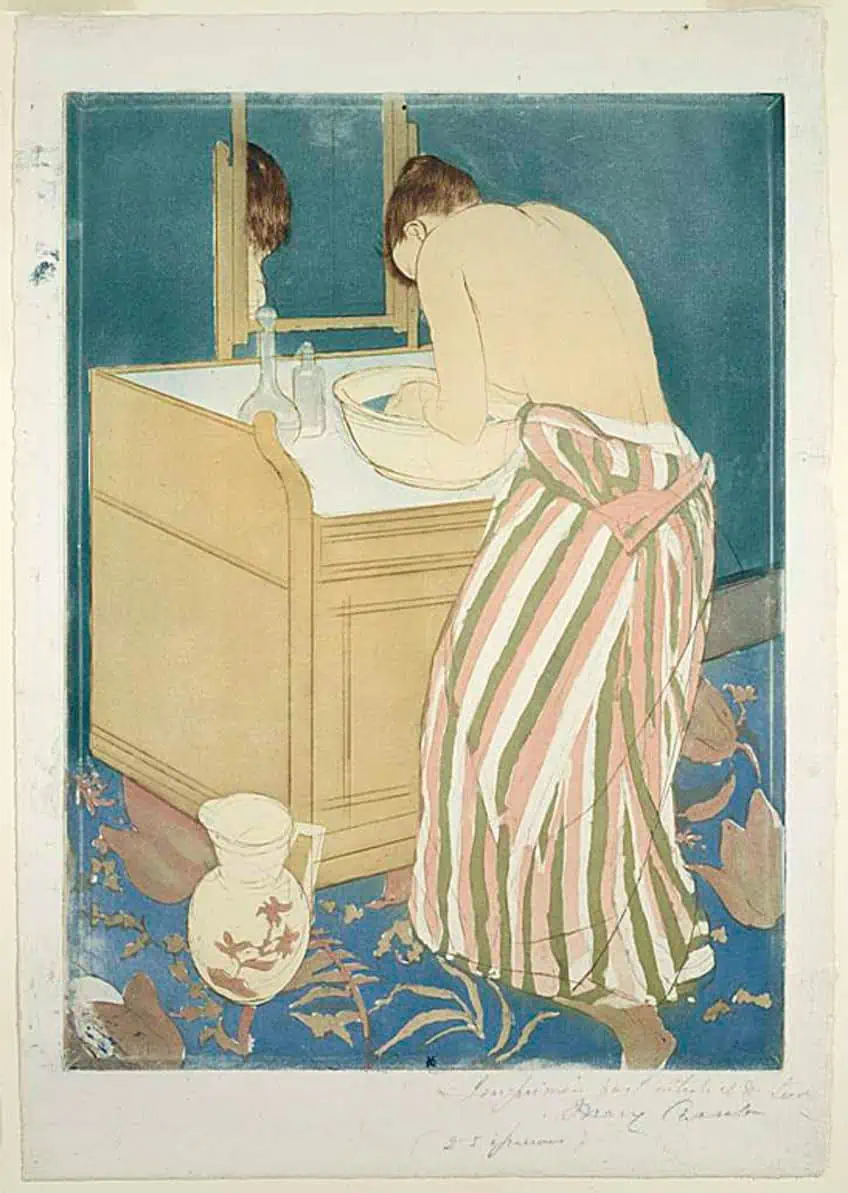
Like mezzotints, aquatints allow for the creation of broad expanses of tone without the need for painstaking cross-hatching; nevertheless, aquatint plates are often stronger than mezzotint plates. Etching times vary, so a test piece can be used to work out the various tones. The first etch should be performed in under a minute, etching for half an hour will result in darker sections, and etching for up to 24 hours will produce an effect where the ink begins to rise off the page. Modern printmakers typically utilize spray paint as opposed to powder, especially when making use of the sugar-lift technique.
The artist creates a solution of sugar and Indian ink by melting sugar into hot ink to create a printing surface. This combination then gets applied with a brush to a plate, resulting in a powerful expression not attainable using traditional etching methods. When the mixture is dried, the plate gets covered with liquid ground and is then immersed in warm water, dissolving the sugar, and the resulting picture “lifts off” the plate.
After the exposed parts have been aquatinted to contain ink, the plate is suitable to print from.
Notable Aquatint Artists
Now that we have covered the aquatint process, we can explore a few of the notable artists who used aquatint in art. They produced works that often resembled watercolors, which is why they were named aquatints. Let’s find out how these artists used aquatint in art and took it to another level.
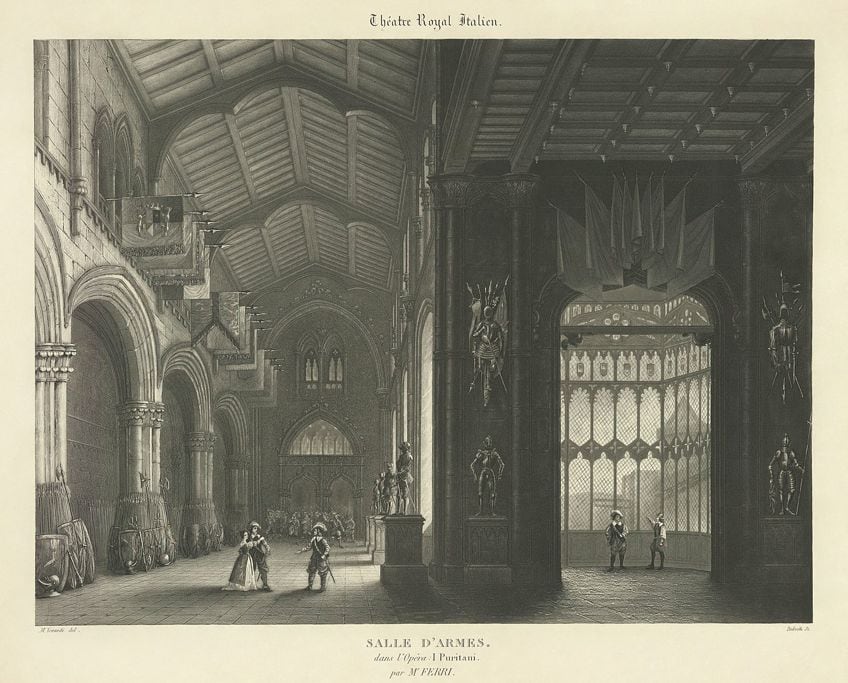
Jean-Baptiste Le Prince (1734 – 1781)
| Artist Name | Jean-Baptiste Le Prince |
| Nationality | French |
| Date of Birth | 17 September 1734 |
| Date of Death | 30 September 1781 |
| Place of Birth | Metz, France |
Jean-Baptiste Nicolas Le Prince was a well-known French painter and etcher. He originally studied art in his hometown of Metz, then moved to Paris around 1750, where he became a student of the famous artist François Boucher. His early works are similar to Boucher’s rococo techniques in both style and theme. In 1758, he traveled to St. Petersburg, Russia, to serve in the Imperial Palace for Catherine the Great.
He ended up spending the next five years in Russia and traveled around Lithuania, Finland, and Siberia.
In 1763, when he returned to Paris, he took with him a large collection of sketches, which he used to create many outstanding paintings and etchings. His visual representation of Russia and its people is notable since he based his compositions solely on his own designs, giving his works a considerably more realistic depiction than his other contemporaries in the 18th century. He is also regarded as the first painter to use aquatint in his etched plates.

Philibert-Louis Debucourt (1755 – 1832)
| Artist Name | Philibert-Louis Debucourt |
| Nationality | French |
| Date of Birth | 13 February 1755 |
| Date of Death | 22 September 1832 |
| Place of Birth | Paris, France |
Philibert-Louis Debucourt, the artist, was born in 1755 in Paris and studied under French painter Vien. He produced a few plates in mezzotint from his own designs, but most of his work was in aquatint. He rose to prominence as a pioneer of multi-plate color prints, blending line engraving with aquatint washes.
He used a variety of techniques, but the majority comprised three color plates and a fourth key plate defining the pattern in black.
Louis-Philippe Mouchy, the sculptor, was his father-in-law. Mouchy generously gave a three-room flat at the Louvre to the married couple, where Debucourt stayed for 12 and a half years. His artworks often included the address of this residence. His more satirical works include La Promenade Publique, an aquatint from 1792 depicting a gathering in the gardens of the Palais-Royal. As well as prints based on his own designs, he also created aquatints Carle Vernet’s works.
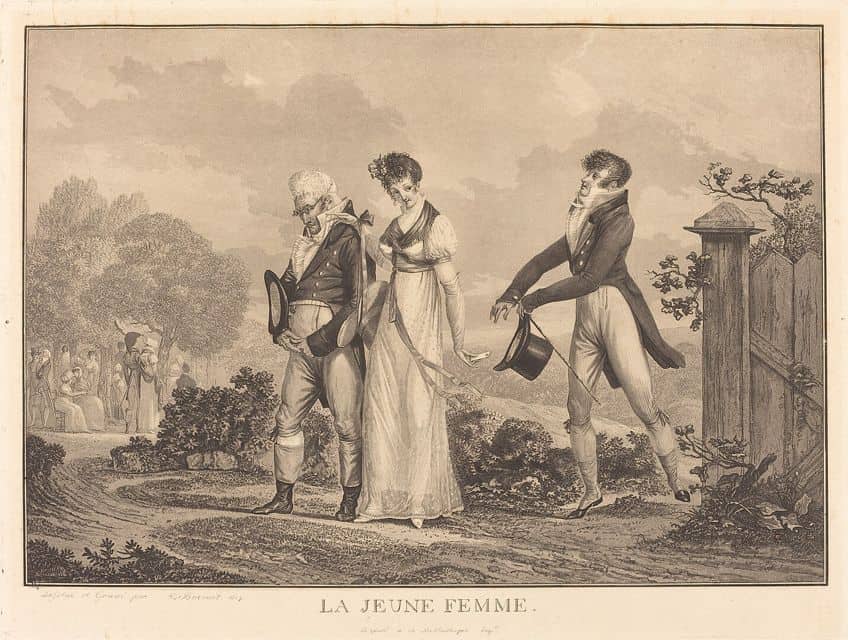
Thomas Rowlandson (1757 – 1827)
| Artist Name | Thomas Rowlandson |
| Nationality | English |
| Date of Birth | 13 July 1757 |
| Date of Death | 21 April 1827 |
| Place of Birth | London, United Kingdom |
Rowlandson was a prolific artist and printer who created both unique political and social satires as well as many illustrations for various novels. He drew funny pictures of his master and several of his pupils as a schoolboy, filling the margins of his textbooks with his drawings. In Paris, he studied the human figure and continued to hone his caricature skills.
His designs were mainly done in outline with a reed pen, then washed with color meticulously.
They were then etched on copper by the artist and aquatinted, with the impressions eventually colored by hand. His ability and ease of draftsmanship distinguished him as a designer. He dealt with politics less often than his rival, Gillray, but he often touched on various aspects of social life in a somewhat sensitive manner.

William Daniell (1769 – 1837)
| Artist Name | William Daniell |
| Nationality | English |
| Date of Birth | c. 1769 |
| Date of Death | 16 August 1837 |
| Place of Birth | Kingston upon Thames, Surrey, United Kingdom |
William Daniell was an English marine and landscape painter, and printer best known for his aquatint works. His father was a bricklayer, and he was born in Kingston upon Thames, Surrey. The young boy’s life changed drastically when he went to live with his uncle, Thomas Daniell, the landscape artist, following his father’s untimely death in 1779. In 1784, William joined his uncle in India, where he assisted his uncle in creating sketches and drawings for a series of prints. His uncle placed an advertisement a few months after they arrived in Calcutta, announcing the upcoming release of a collection of 12 views of the city.
This seemed like a good idea because Calcutta was growing quickly and its European residents might be interested in purchasing images of the city’s most recent buildings.
William and his uncle were both unskilled printmakers who had to rely on Indian craftsmen to complete the set, which was completed in aquatint and sold rather well. Daniell and his uncle returned to England in 1794 and they moved into a place in Fitzroy Square. Their initial goal was to publish a collection of their Indian paintings.
The chosen landscapes were turned into aquatints, utilizing William’s hard-earned skills in this sensitive medium. Farington, an artist and friend of Daniell’s, recalls in his journal that he informed Farington that following his return to England, he devoted the next seven years honing his aquatinting skills from six a.m. until midnight every day. Oriental Scenery, their famous work on India, was released in 1795 and included 144 colored aquatints. Daniell’s final major creative work was completed between 1827 and 1830. During this period, he developed an interest in the countryside surrounding Windsor. He created a group of 12 aquatints depicting water views in Virginia and Windsor.
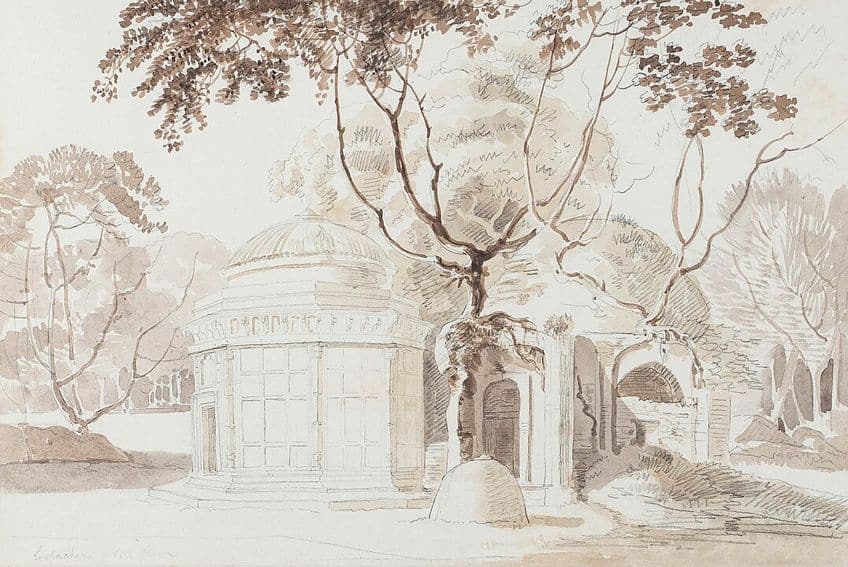
The Advantages and Disadvantages of Aquatint Printmaking
Aquatint is often employed in etchings and other intaglio printing techniques for creating tonal and textural effects. As with any medium, there are various advantages and disadvantages to using the aquatint process. Let’s find out what these pros and cons are below.
By changing the density of the acid-resistant granules on the plate, painters are able to create a wide variety of tonal values, from very light grays to dark blacks. As a result, it is regarded as an adaptable technique for producing highly detailed images. Aquatint is often used to produce a wide range of surface effects and textures, which is very beneficial for artists who want to add atmosphere and depth to their work.
Aquatint enables the production of numerous, identical prints from one single plate, allowing several copies of a work of art to be shared and sold.

Aquatints don’t have to be used on their own and can be combined with other techniques to provide artwork with both lines and tones. Because the density of the granules can be controlled, artists enjoy a greater degree of precision when it comes to shading in their aquatint artworks.
While it may be fun and the results look great, making an aquatint plate can usually be a time-consuming activity. It consists of multiple steps, including adding the aquatint ground, warming it to get the appropriate texture, and acid etching the plate. Each stage necessitates great consideration and can take some time. The act of etching the plate with acid can cause plate wear and deterioration over time, limiting the amount of high-quality prints that can be produced from one plate. This can increase the value of limited edition prints while simultaneously limiting the artist’s ability to produce large volumes of prints to sell. It’s also not the easiest skill to pick up and will take time to master. One must also be cautious of the dangers involved in working with acid.
That completes our look at aquatint in art. As we have discovered, aquatint etching is a type of intaglio printmaking that has a similar appearance to watercolor art. The origins of the style have never clearly been identified, yet there are several notable artists who managed to refine and perfect the technique over time. While the aquatint printmaking process can be a rather labor-intensive activity, the final result is worth the time and effort.
Frequently Asked Questions
What Is Aquatint Etching?
Aquatint printmaking combines etching with the aquatint process to produce images with a range of tonal and textural qualities. It is one of several printmaking techniques in which an image is etched into a plate and then ink gets transferred to paper using a printing press. The plate is immersed in an acid bath, and the acid eats away at the exposed parts of the plate that are not covered by resin. The plate is then inked once the etching has been completed and cleaned. The plate is subsequently pressed onto paper, where the ink is transferred to the paper and the completed print is created.
What Is a Characteristic of the Aquatint Process?
Aquatint has become renowned for its ability to create a wide range of tonal values. To obtain the desired results, artists can modify the density and distribution of the grain, making it a flexible tool for printmakers. The granular texture formed by the aquatint process differentiates prints from other printing processes by giving them a distinct and much sought-after visual aesthetic. The aquatint process is also popular because of the wide range of textures that can be produced.
Jordan Anthony is a Cape Town-based film photographer, curator, and arts writer. She holds a Bachelor of Art in Fine Arts from the University of the Witwatersrand, Johannesburg, where she explored themes like healing, identity, dreams, and intuitive creation in her Contemporary art practice. Jordan has collaborated with various local art institutions, including the KZNSA Gallery in Durban, the Turbine Art Fair, and the Wits Art Museum. Her photography focuses on abstract color manipulations, portraiture, candid shots, and urban landscapes. She’s intrigued by philosophy, memory, and esotericism, drawing inspiration from Surrealism, Fluxus, and ancient civilizations, as well as childhood influences and found objects. Jordan is working for artfilemagazine since 2022 and writes blog posts about art history and photography.
Learn more about Jordan Anthony and about us.
Cite this Article
Jordan, Anthony, “What Is Aquatint? – Creating Tonal Depth Through Etching.” artfilemagazine – Your Online Art Source. November 8, 2023. URL: https://artfilemagazine.com/what-is-aquatint/
Anthony, J. (2023, 8 November). What Is Aquatint? – Creating Tonal Depth Through Etching. artfilemagazine – Your Online Art Source. https://artfilemagazine.com/what-is-aquatint/
Anthony, Jordan. “What Is Aquatint? – Creating Tonal Depth Through Etching.” artfilemagazine – Your Online Art Source, November 8, 2023. https://artfilemagazine.com/what-is-aquatint/.


